Gemstone Inclusions: The Good, the Bad and the Ugly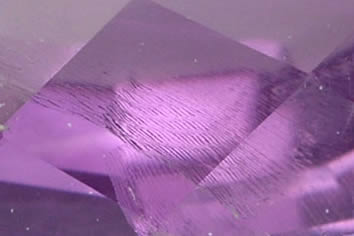
Amethyst Fingerprint Inclusions
The definition of perfect, according to Merriam-Webster, is to be "entirely without fault or defect". So in essence, in order to be defined as perfect, something must be internally and externally flawless. A natural gemstone is nature's creation and most of us are all too aware that nature is rarely perfect. It is fair to say that natural gemstones are expected to have some degree of imperfection, allowing the concept of flawlessness to flow with leniency in the colored gem trade. Colored gems have completely different standards to diamonds, with regard to what are acceptable inclusions, which is why the colored gem trade lacks an official clarity grading scale. External Flaws
Gemstones can have both external and internal flaws. Gemstone flaws occurring on the outer surface of a gem are more than likely the result of an "external" environmental factor. Some examples of external flaws commonly found with precious gems are scratches, blemishes or chipped edges. These kinds of surface flaws may affect the value and appearance of a gemstone, but other types of external flaws, such as natural flaws, may not affect a gemstone's value. Internal Flaws
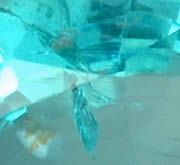
Internal Flaws in Apatite
Internal flaws found in gemstones are known as inclusions. Gemstone inclusions are often used to help identify a specific gem. Like fingerprints, each gemstone has its own unique internal structure. Due to the individual characteristics of each gem, no two gemstones are alike. Whether it's the weight, dimensions, color, purities or impurities, a gemstone is unique as a snowflake. Formed by nature, or sometimes by man through the process of enhancement, inclusions can make the most intriguing of gems even more uncommon. Internal gem inclusions can be classified in several ways, but will generally fall under one of the following main categories: Solid Inclusions
A solid inclusion is any enclosed inclusion, which can pretty much mean any other mineral specimen, including the host mineral. For example, solid inclusions can include pyrite deposits found in lapis lazuli, green mica deposits in aventurine and rutile deposits found in sapphire. Other solid inclusions could be needles, minerals and crystal growths such as calcite. Liquid Inclusions
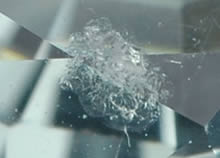
Liquid inclusions in gemstones
Some gemstone specimens have unique internal cavities within their structure. Typically these cavities are very small, but some specimens may have quite large cavities. These cavities are often occupied by a liquid, such as water or saline. Cavities can also contain liquid carbon dioxide or even natural hydrocarbon compounds. Topaz, beryl and quartz are gem types known to have frequent occurrences of liquid inclusions and opals have an extremely high water content, sometimes up to 30% liquid silica gel or hydrated silicon dioxide. This liquid is responsible for producing the vivid rainbow hues in opal's play of color. Gaseous Inclusions
As with liquid inclusions, gaseous inclusions are gasses that occupy a cavity within a gemstone. Typically cavity gasses are composed of air, but they can also be filled with carbon dioxide or compound gasses. It is even possible for gasses to be within a liquid inclusion as well. Gaseous inclusions can be easily identified since they appear as bubbles in a gemstone. Optical Inclusions

Sapphire Optical Inclusion
One type of optical illusion is where the host crystal's external shape can be seen in a gemstone. As a host crystal grows, stops, and then starts to re-grow again, it coats previous surface layers. During this repeated process, preexisting layers are coated with new substances. The resulting formation is what is referred to as a phantom inclusion. Another type of optical inclusion is caused when changes in the structure or composition of a crystal result in color zoning. Additionally, radiation halos are caused by radioactive minerals in crystals. Value
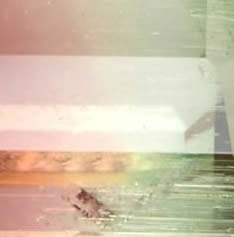
Typical Needle-Like Inclusions in Tourmaline
It is understandable to believe the common misperception that all inclusions are bad, especially since the very word, inclusion, can easily conjure up vivid images of nasty internal cracks, feathers, fractures or clouds, but the truth is that not all inclusions are bad. In fact, there are even some gem types that are actually valued for their inclusions. For example, amber is a gem type composed of fossilized, hardened resin. Insects, plants and other organic materials are often found trapped within the resin, and specimens with organic matter inside are highly prized and valued. Other types of gems with valuable inclusions are rutile quartz, Russian demantoid garnet and certain types of corundum, such as ruby and sapphire that contain velvety rutile inclusions (known in the trade as "silk"). 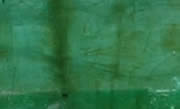
Common Inclusions in Natural Emerald
It is fair to say that the value of a gemstone is based on its rarity and not whether or not it has so-called flaws. A gemstone with impurities and inclusions may actually be considered a perfect specimen and could just be more valuable than you would expect. Therefore, please carefully consider disregarding included gems, because they could turn out to be more valuable than one would think. Customer Questions Back to Top
Every month we answer questions of general interest from our customers. Please feel free to send your questions or suggestions to our support team at help@gemselect.com! Question
I'm looking for a specific gemstone and haven't been able to find it. I've been coming back frequently and checking your new arrivals, and would like to know how often you guys update this?
Answer
We add stock to our website every single business day. As we add gemstones to our website inventory, they are all automatically added to the new arrivals section of our website. In addition, they are also categorized in the main section, so you'll be able to find them very easily using our refined search options. Within the main category, you can sort selections by date descending in case it has been a while since you last checked. Our new stock will stay in the new arrivals section for only 5 days, so if it's been a week, we suggest looking under the main gem type and using our refined (date) search.
Question
I made a purchase last week and paid $10.00 for shipping. This week I placed another order and the shipping rate is only $6.99. Was I overcharged last week?
Answer
We're pleased to confirm that no overcharge was made to your order. The reason for the different shipping fees is that since September 1st, 2012, our standard shipping (previously $10.00) was reduced to an incredibly low $6.99. GemSelect has heard your feedback and we were able to renegotiate our shipping and insurance rates with our providers to make them even more competitive. We are very pleased to introduce our new reduced effective shipping rates from September 2012.
Question
I really like your products and the prices are very competitive, but your shipping rates seem to be a bit high? Why is this?
Answer
Many of our customers are not aware that we are shipping international parcels. We are located in Thailand and the shipping fees for international parcels are much higher than domestic rates. However, after receiving numerous comments and feedback from our customers, we have looked into alternative shipping methods and we are very pleased to inform all that your feedback has been heard. As of September 1st, 2012, our standard shipping (previously $10.00) has been reduced to only $6.99, which includes handling, insurance and delivery to anywhere in the world. We hope this reduction in shipping costs is testament to the fact that we will always continue to improve our services.
Keep up with our new arrivals before they hit the newsletter by joining our thousands of fans and followers on our social networking pages. We love interacting with our customers - you can visit us on Tumblr, LinkedIn, Twitter, Facebook or Pinterest! To ensure you can receive our emails, please be sure to add help@gemselect.com to your list of safe contacts, or you add us into your email address book! Please feel free to contact us with any questions, comments and queries! We respond to each and every email we receive. Happy Gem Hunting! This Page in Other Languages
|
| STAY IN TOUCH | NEWSLETTER |
| *You're signing up to receive GemSelect promotional email. |
Copyright © 2005-2024 GemSelect.com all rights reserved.
Reproduction (text or graphics) without the express written consent of GemSelect.com (SETT Company Ltd.) is strictly prohibited.
1464